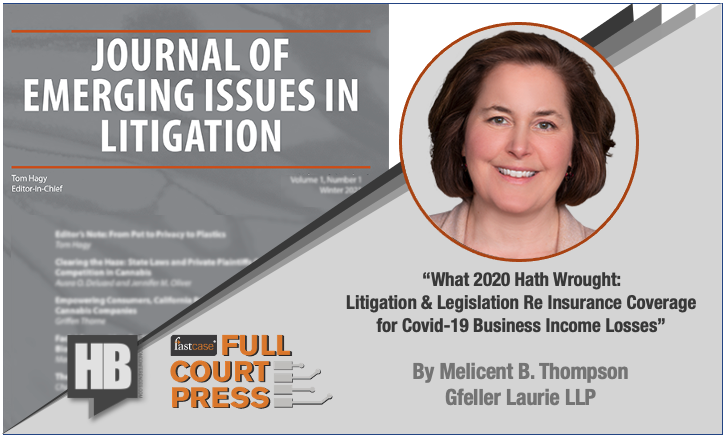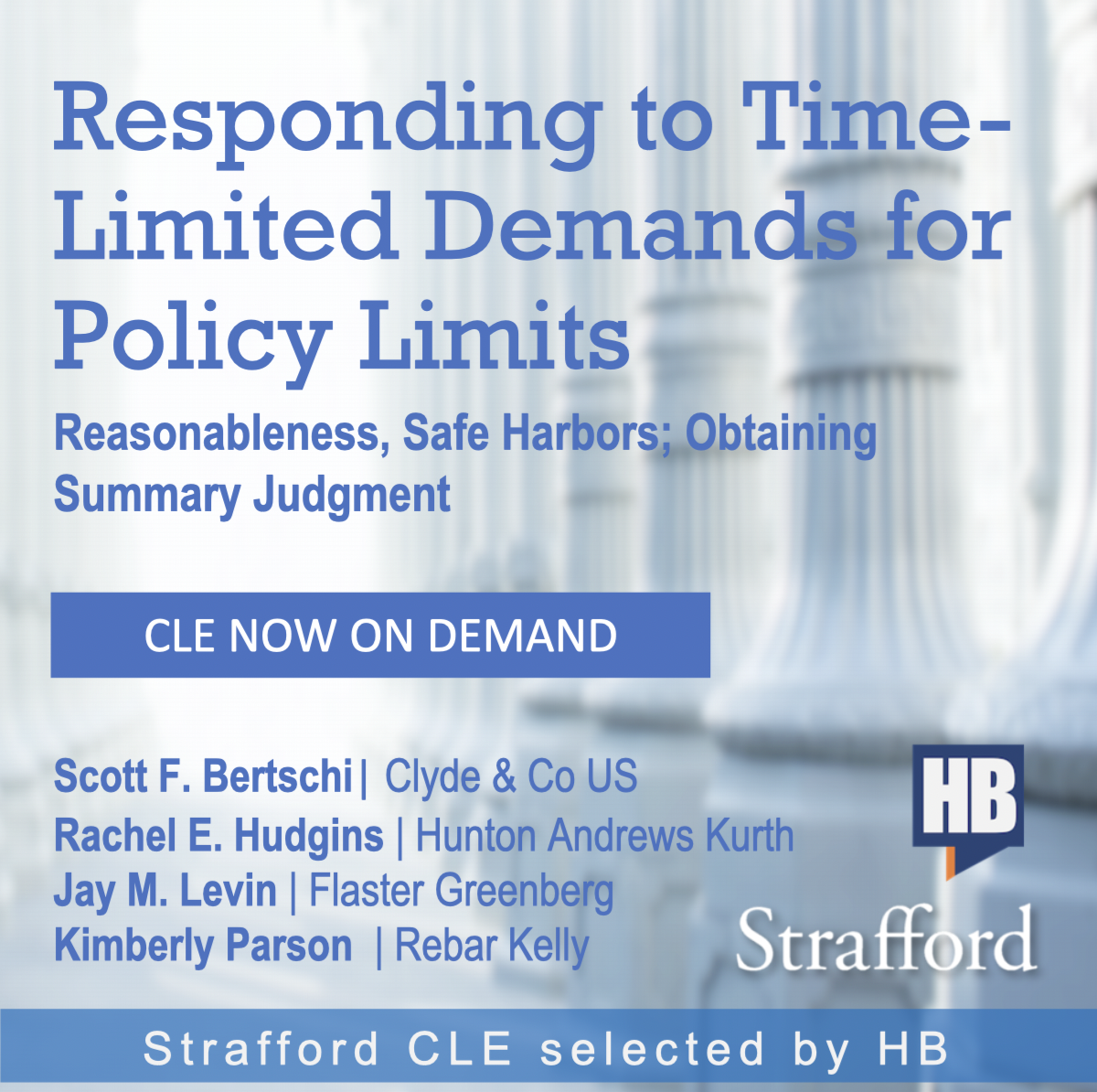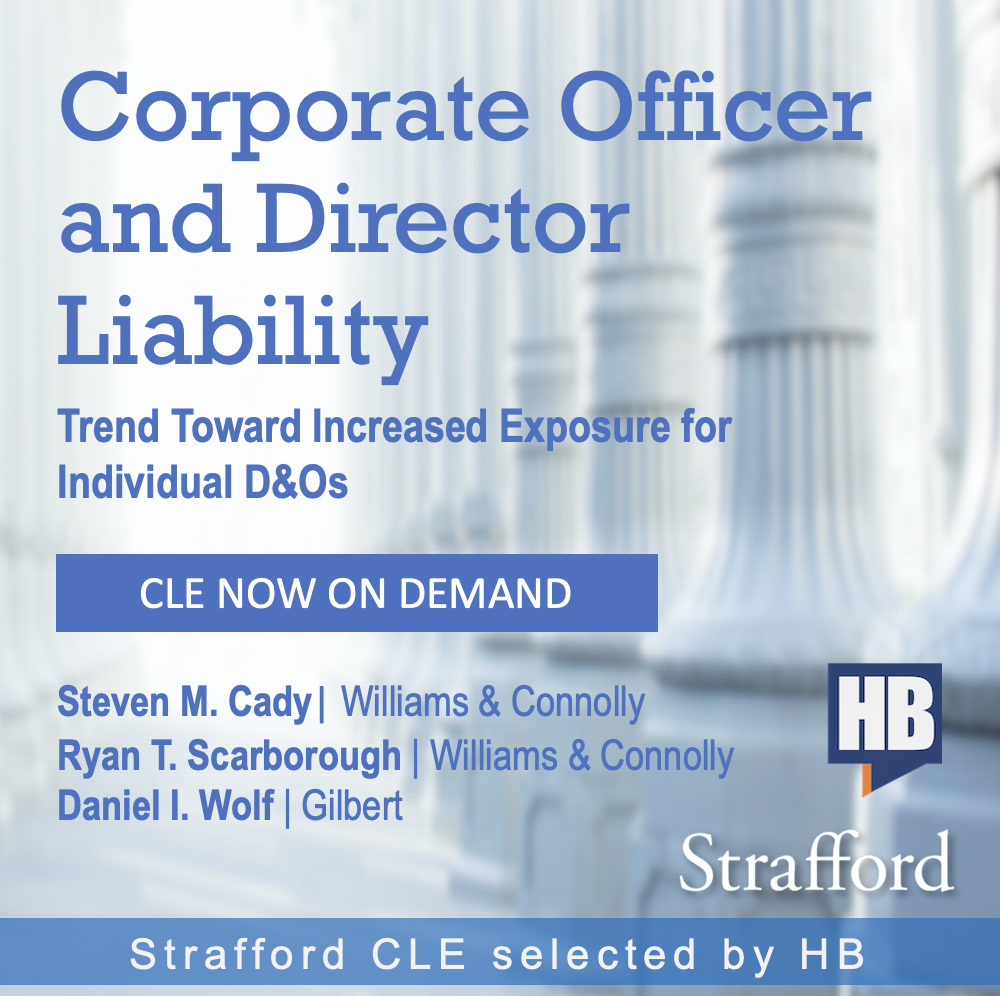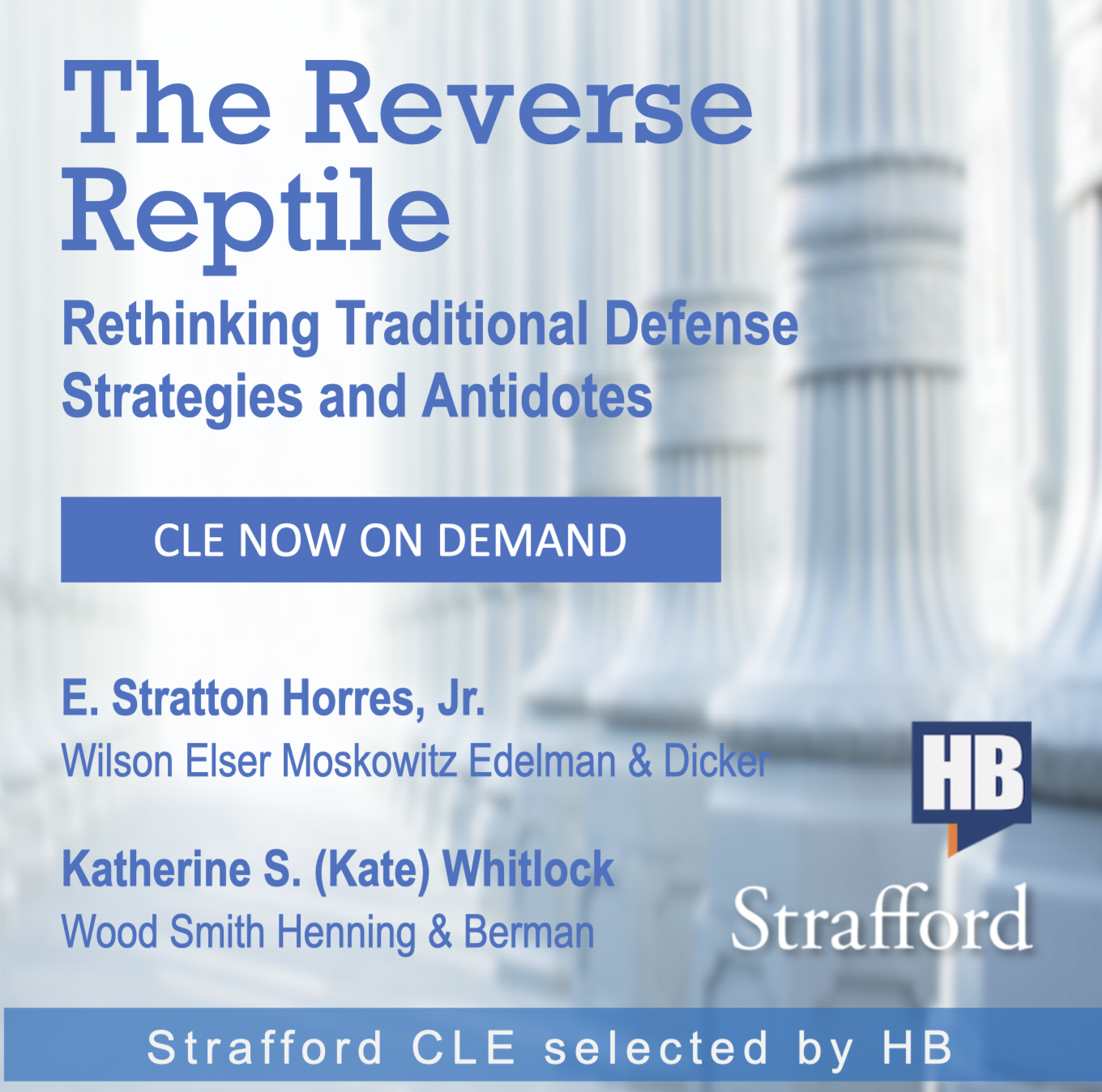Melicent B. Thompson on COVID-19 Coverage
Abstract
COVID-19 indisputably has taken an enormous economic toll. Governmental shutdown orders early in the pandemic and ongoing restrictions on business’ operations have resulted in a flood of claims for insurance coverage for business income losses attributable to those orders and restrictions. This article reviews the litigation and legislative developments directed at attempting to find insurance coverage for such losses and the reasons why those efforts have been unsuccessful for the most part.
Author
Melicent B. Thompson (mthompson@gllawgroup.com) is a Partner with the law firm Gfeller Laurie, LLP, in West Hartford, Connecticut. She thanks her fellow Gfeller Laurie, LLP attorneys who contributed to this article. Melicent has close to 25 years of experience in litigation and corporate counseling. She actively practices in Connecticut and Georgia courts in insurance coverage, business disputes, professional liability claims, defense of educational and financial institutions and general liability. Her insurance coverage practice encompasses all areas of first and third party claims and related litigation services, including declaratory judgment actions, defense of bad faith claims and reinsurance matters. Melicent has substantial appellate court experience, having briefed and argued appeals before the Second Circuit Court of Appeals and the Connecticut Supreme and Appellate Courts. Her pro bono work includes serving as General Counsel to the Board of Directors of Gifts of Love, a charity providing basic needs to the working poor, based in Avon, Connecticut. She also serves as a member of the Advisory Council of Bay Path University (Longmeadow, Massachusetts).
About
The Journal on Emerging Issues in Litigation is a co-production of HB, Fastcase, and Law Street Media. You can also hear the complementary (and complimentary) Emerging Litigation Podcast wherever podcasts appear. For questions, contact Tom Hagy, Editor in Chief, at Editor@LitigationConferences.com.
PFAS Consumer Fraud Litigation
HB Litigation Conferences presents a CLE-eligible webinar PFAS Consumer Fraud Litigation and Regulation On August 26, 2022, yet another PFAS consumer fraud lawsuit was filed against a product manufacturer in which it is alleged that since the products contained PFAS and the company marketed the products as environmentally friendly and safe for use by consumers, a proposed class of consumers was deceived into buying the allegedly unsafe products. The lawsuit is not an isolated incident, as there have been over 20 such lawsuits, almost all of them filed in 2022. With the ever-increasing media, political and scientific attention being given to PFAS, the panelists predict that these lawsuits will continue to increase at an exponentially increasing rate moving forward against companies of all sizes that manufacture and supply products. Bringing together almost 20 years of product litigation experience and decades of scientific expertise in the field of chemicals such as PFAS, the panelists will discuss the legal issues that companies are facing from current or legacy uses of PFAS (whether intentional or not) and practical solutions that can be taken pre-lawsuit to understand and minimize risk. Questions answered: What do state and federal regulations say about PFAS in drinking water? If your company doesn’t use the two original types of PFAS, are you at less risk of litigation? Which industries currently face the most risk of PFAS-related consumer fraud cases? Are plaintiffs securing significant verdicts in personal injury litigation? And more! Plus, email your questions to the presenters. On Demand CLE Webinar What you get PowerPoint and supplemental materials. Complete recording for later review. Answers to your questions via email. Invitation to contact speakers. 1.5 CLE credit*. CLE assistance. *Subject to state bar rules. For licensed attorneys. Register Download a free article! Meet the Speakers John Gardella Shareholder | CMBG3 John is a recognized thought leader on PFAS issues and a seasoned trial attorney with over 75 verdicts. He the Chair of the [...]
U.S. Government Enforcement Actions: Regulatory remediation settlement trends and claims administration best practices
HB Litigation Conferences presents a complimentary CLE-eligible webinar on-demand Government Enforcement Actions Regulatory Remediation Settlement Trends and Administration Best Practices Government enforcement actions are increasing. It’s important for attorneys to understand regulatory trends and best practices for remediation and administration, and how these actions differ from traditional class action settlements. Here are some of the questions our speakers will address in this CLE-eligible webinar: Why are government enforcement actions increasing? What are the common types of government consumer enforcement actions and how do they proceed? How do government enforcement actions differ from class actions? What are the key considerations in settlement negotiations in government enforcement actions? What are the components of settlement agreements in a government enforcement action? What notice efforts are required to help satisfy expected participation rates? Plus, answers to your questions via live chat. Webinar On Demand Recorded January 2023 What you get: PowerPoint and supplemental materials. Complete recording for later review. Answers to your questions via email. Invitation to contact speakers directly. 1 CLE credit*. CLE assistance. *Subject to state bar rules. For licensed attorneys. Register Meet the Speakers Mark Rapazzini Senior Director | Kroll Mark has more than 25 years of legal experience in cases ranging from individual personal injury litigation to class actions and complex mass torts. Prior to Kroll, Mark was an attorney at Alexander, Rapazzini & Graham, a partner at Duane Morris LLP, and as a founding partner at Rapazzini & Graham, LLP. While practicing law, Mark and his law partner founded RG2 Claims Administration, LLC, where he served as Chief Operating Officer responsible for business development and strategic direction. In 2008, Mark and his RG2 co-founder joined a national claims administration company, where he was a Senior Vice President in client services and consulting. Mark has more than 20 years of experience managing and supervising complex claims administration and government enforcement matters. He has served as a Court-Appointed Mediator, Court-Appointed Arbitrator, Settlement Judge [...]
Responding to Time-Limited Demands for Policy Limits: Reasonableness, Safe Harbors; Obtaining Summary Judgment
Responding to Time-Limited Demands for Policy Limits: Reasonableness, Safe Harbors; Obtaining Summary Judgment A time limited policy limits demand to a defendant's insurer is a frequent tool used by plaintiff's lawyers in an attempt to force crucial decisions on limited information. They have the capacity to force crucial decisions, sometimes with limited information and with very little time to decide. Bad faith liability can arise from the improper rejection or non-payment of a time-limited demand, often without showing intentional wrongdoing or motive.What constitutes a valid demand that triggers the obligation to respond and what constitutes a proper response has generated a broad body of case law. Statutory or judge-made "safe harbors" may allow a range of responses, but these rules can be narrowly construed and easily misinterpreted.If a bad faith claim is filed, the reasonableness standards that apply in a time-limited demand situation make summary judgment challenging but by no means impossible, as demonstrated by recent decisions in key jurisdictions.Listen as this experienced panel of insurance attorneys guides counsel through responding to time-limited demands and offers a roadmap to summary judgment if a bad faith case is filed. Outline Essential elements of a policy-limit, time-limit demand Standards for evaluation of time-limited demands Statutory Common law Covered vs. uncovered claims Safe harbors Roadmap to summary judgment if bad faith alleged CLE On Demand Webinar A Strafford production specially selected for HB audiences. Scott F. Bertschi Partner Clyde & Co US Rachel E. Hudgins Attorney Hunton Andrews Kurth Jay M. Levin Member Flaster Greenberg Kimberly Parson Partner Rebar Kelly The panel will review these and other pivotal issues: Who can make a time-limited demand, and is client consent required? Does the insurer have a duty to settle or a duty to make reasonable settlement decisions? Must the demand include any particular information? What is the importance of releases, indemnification, and lien treatment offered or omitted from a demand? Can the insurer consider coverage defenses or questionable liability when responding? [...]
Corporate Officer and Director Liability: Trend Toward Increased Exposure for Individual D&Os
Corporate Officer and Director Liability: Trend Toward Increased Exposure for Individual D&Os D&Os owe statutory and common law duties to shareholders, including fiduciary duties of care and loyalty. As long as they take reasonable steps to inform themselves and discharge their duties, D&Os are supposed to be protected by the business judgment rule. But this protection is not absolute, and even allegations of violations or breaches of fiduciary duties can lead to an expensive, time-consuming lawsuit with potentially devastating personal liability for directors, officers, and LLC managers. Our panel of experienced litigators from Williams & Connolly LLP and Gilbert LLP will discuss lessons learned from recent actions by federal and state regulators to hold individual D&Os liable for corporate misconduct. In addition, the panel will address recent cases where courts have made it easier to sue directors or officers in their individual capacities. The CLE will provide practical guidance on how to mitigate personal liability and fund the defense of individuals, including indemnification provisions and D&O insurance, without waiving privilege. Outline Director and officer liability Fiduciary duties Business Judgment Rule: statute/common law Limitations at the MTD stage Exposures Damages Disgorgement Penalties Recent efforts to impose liability on individual D&Os Government enforcement action DOJ SEC Other regulators Individual shareholder actions Direct shareholder actions Derivative shareholder actions Mitigating personal liability Indemnification Limitations Discretionary nature of advancement D&O insurance Understanding Side A and Side B coverage What constitutes a “claim” and when to provide notice Key exclusions: regulatory exclusion; insured-versus-insured exclusion; conduct exclusion Best practices Indemnification D&O insurance Mitigating risk of privilege waivers in communications with insurers A Strafford production specially selected for HB audiences. Steven M. Cady Partner Williams & Connolly Ryan T. Scarborough Partner Williams & Connolly Daniel I. Wolf Partner Gilbert The panel will address these and other key issues: Primer on the basics of D&O liability The trend for individual D&O exposure in government enforcement actions How D&Os can mitigate risk, including when a state allows shareholders to file direct claims of [...]
One Insured, Multiple Insurers, Multiple Lawsuits: Managing Liability, Settlement, and Coverage Issues
One Insured, Multiple Insurers, Multiple Lawsuits: Managing Liability, Settlements, and Coverage Issues Seemingly intractable problems can arise when a single defendant has been sued multiple times and may have coverage for some or all matters from multiple insurers. Often there is considerable debate over the defendant's liability and insurers' duty to defend claims and in which courts. Subrogation and indemnity considerations often permeate negotiations.Efforts to resolve underlying matters, whether by settlement or otherwise, are complex and require advanced strategies to prevent misunderstanding and insurers from working at cross purposes. Insurers must often convince plaintiffs in the litigation and their fellow insurers about the reasonable value of various claims. Insurers must always be ready with strategies when an insurer refuses to fund a judgment or settlement. Listen as this esteemed panel of seasoned insurance counsel guides attendees in managing coverage, liability, and settlement issues that arise when a single policyholder is sued multiple times and has been insured by numerous insurers over time. Outline Overview Duty to defend and defense costs Duty to settle, mediation, and insurer consent Duty to indemnify: managing the unwilling insurer Subrogation issues Recorded on Wednesday, October 12th, 2022 $297* This Strafford production has been specially selected for HB audiences. Kim M. Jackson Partner Bovis Kyle Burch & Medlin Paul R. Koepff Partner Clyde & Co US David W. Overstreet Partner Earhart Overstreet The panel will review these and other key issues: What solutions exist for identifying who has the duty to defend and cover defense costs? What are the coverage implications of establishing a reasonable settlement value? If joint and several liability is not available, how are damages allocated? What happens after the insurer pays a judgment or a settlement of the underlying lawsuit but believes the insured had a claim against some other party for the loss?
The Reverse Reptile: Rethinking Traditional Defense Strategies and Antidotes
The Reverse Reptile: Rethinking Traditional Defense Strategies and Antidotes Photo by Jeremy McGilvrey on Unsplash "Reptile theory" is a challenging and often-discussed plaintiff's trial strategy. It subtly encourages jurors to envision themselves in the same situation as a plaintiff but with the power to "save" the plaintiff, themselves, and the community from future harm by awarding a large verdict. Much has been written and discussed about oral defenses against reptile strategy, such as during depositions and witness examinations, as well as during opening and closing. But there are also powerful tools and strategies that can be wielded in defense of this strategy: counter anchoring numbers on damages, humanizing the corporate defendant, motions in limine, trial briefs, and motions for new trial/judgment notwithstanding the verdict, among others. Knowing these strategies and how to present them, including drafting these motions and briefs carefully and precisely allows defense counsel to neutralize common arguments from plaintiffs. By establishing that specific questions and evidence are part of the reptile strategy, defense counsel can counter the plaintiff counsel’s moves at every turn and prevent the reptiles bite. Listen as this panel of experienced trial attorneys explains how effectively written papers can augment other anti-reptile defenses and how counsel can draft winning papers. This Strafford production has been specially selected for HB audiences. Regular Price: $197* Recorded: 10/12/2022 Speakers E. Stratton Horres, Jr. Senior Counsel Wilson Elser Moskowitz Edelman & Dicker Katherine S. (Kate) Whitlock Partner Wood Smith Henning & Berman Benefits The panel will review these and other key issues: What issues and lines of questioning are best suited for written motions in limine? How can defendants respond to allegations that their motions in limine seek what is in effect a “gag” order? How can reptile theory error be best preserved for appeal? When can counsel seek a new trial based on reptile tactics? Course Outline Overview of reptile approach Procedural motions to keep reptile questioning and argument out Substantive pre-trial motions to combat reptile tactics Substantive post-trial motions to combat [...]







